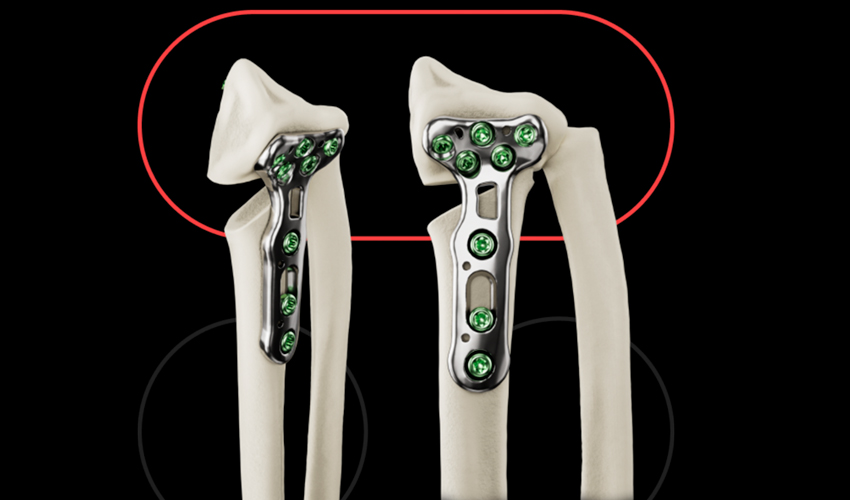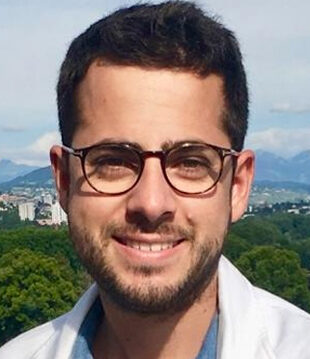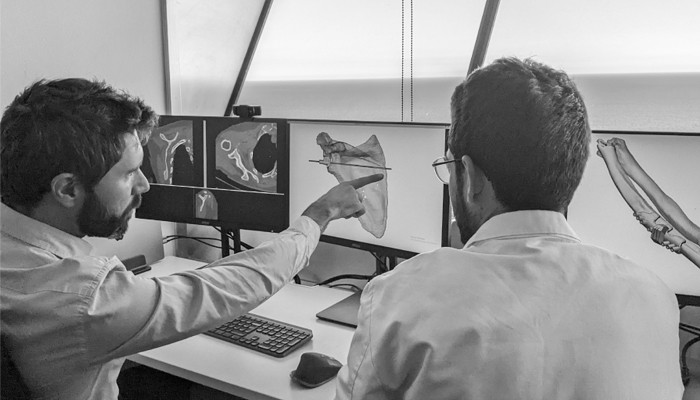Tailor Surgery on the Use of Additive Manufacturing in Medicine

The usage of 3D printing in the medical domain continues to expand. Presently, it is possible to fabricate personalized medical devices tailored to individual patients, including prosthetics, orthotics, and custom implants. Moreover, additive manufacturing serves as a valuable aid in complex surgical procedures by enabling the creation of intricate models and surgical guides. Worldwide, the significance of 3D technology is on the rise, with numerous hospitals, universities, research laboratories, and health centers already embracing this manufacturing approach. One exemplary medical facility using 3D printing is Tailor Surgery, with whom we had a conversation to delve deeper into the application of 3D printing in medicine.
3DN: Could you please introduce yourself and share your connection with 3D printing?

Dr. Ferran Fillat
My name is Dr. Ferran Fillat Gomà, and I specialize in orthopedic surgery and traumatology. I completed my PhD thesis on the utilization of 3D printing in my field, particularly focusing on its impact on enhancing the diagnosis of proximal humerus fractures. Recognizing the diverse potential of 3D printing in traumatology, I took the initiative to establish the digital surgical planning laboratory, now known as 3DPTLab, at the Research Institute of Parc Taulí Hospital. Alongside my PhD work, I initiated various research endeavors related to 3D printing and its clinical applications. Currently, the hospital’s 3D lab is actively engaged in over 22 research projects, aimed at providing scientific evidence for the implementation of this technology in other medical specialties beyond traumatology.
3DN: How did the idea of founding Tailor Surgery originate?
The establishment of Tailor Surgery arose from a genuine clinical requirement. We recognized the potential of 3D printing to offer personalized treatments in orthopedic surgery. In the current landscape of orthopedic surgery and traumatology, a majority of procedures conducted in the operating room involve standard implants. Despite the existence of technology for personalization, most surgeries still rely on fitting the patient to the implant. The significant advantage of 3D printing lies in its ability to create customized implants for each individual patient. By utilizing digital surgery in advance, this technology allows us to anticipate challenges and complications prior to the actual surgery. Consequently, we can enhance the patient’s diagnosis and provide a safer, more accurate, and efficient treatment approach.
3DN: What should be considered when using technology in the medical field?
The primary consideration is ensuring that the technology brings added value to the process. Whether applied for diagnostics or treatments, 3D technology should demonstrate superior capabilities compared to current methods. While various 3D printing applications exist, only those that have proven their value are put into practice. Therefore, it is crucial to establish the technology’s worth through demonstration, followed by rigorous scientific evidence supporting its safety, efficacy, and cost-effectiveness before implementation.

3DN: What materials and printing processes do you work with?
In the medical sector, materials need specific certification for medical use, leading to the usage of various materials based on their applicability. There are two main areas to consider: materials certified for medical use, which must meet safety requirements and medical certifications, and may also require certified manufacturing processes. Commonly used materials include resins, silicones, polyamides, and medical titanium. The other area involves the experimental environment, where prototypes that do not come into contact with patients undergo validation. In this context, a variety of materials can be used for experimental testing, depending on the technical requirements.
3DN: How do you see the future of additive manufacturing in medicine?
I think its use in the medical field is becoming more and more prevalent in various products and applications these days. I think this trend will increase in the next five years as many research groups publish their results on new applications. The benefits and applications that this technology brings to the medical sector are endless.
3DN: Any final words for our readers?
I would especially encourage researchers, because the applications and possibilities are endless. Focus on those that will truly benefit the patient. Don’t get discouraged on the road to success. For more information, click HERE.
What do you think of Tailor Surgery? Let us know in a comment below or on our LinkedIn, Facebook, and Twitter pages! Don’t forget to sign up for our free weekly Newsletter here, the latest 3D printing news straight to your inbox! You can also find all our videos on our YouTube channel.
*All photo credits: Tailor Surgery







Except mentioning some materials specific for his work, the interview gave no interesting information. Reading it was a waste of time.